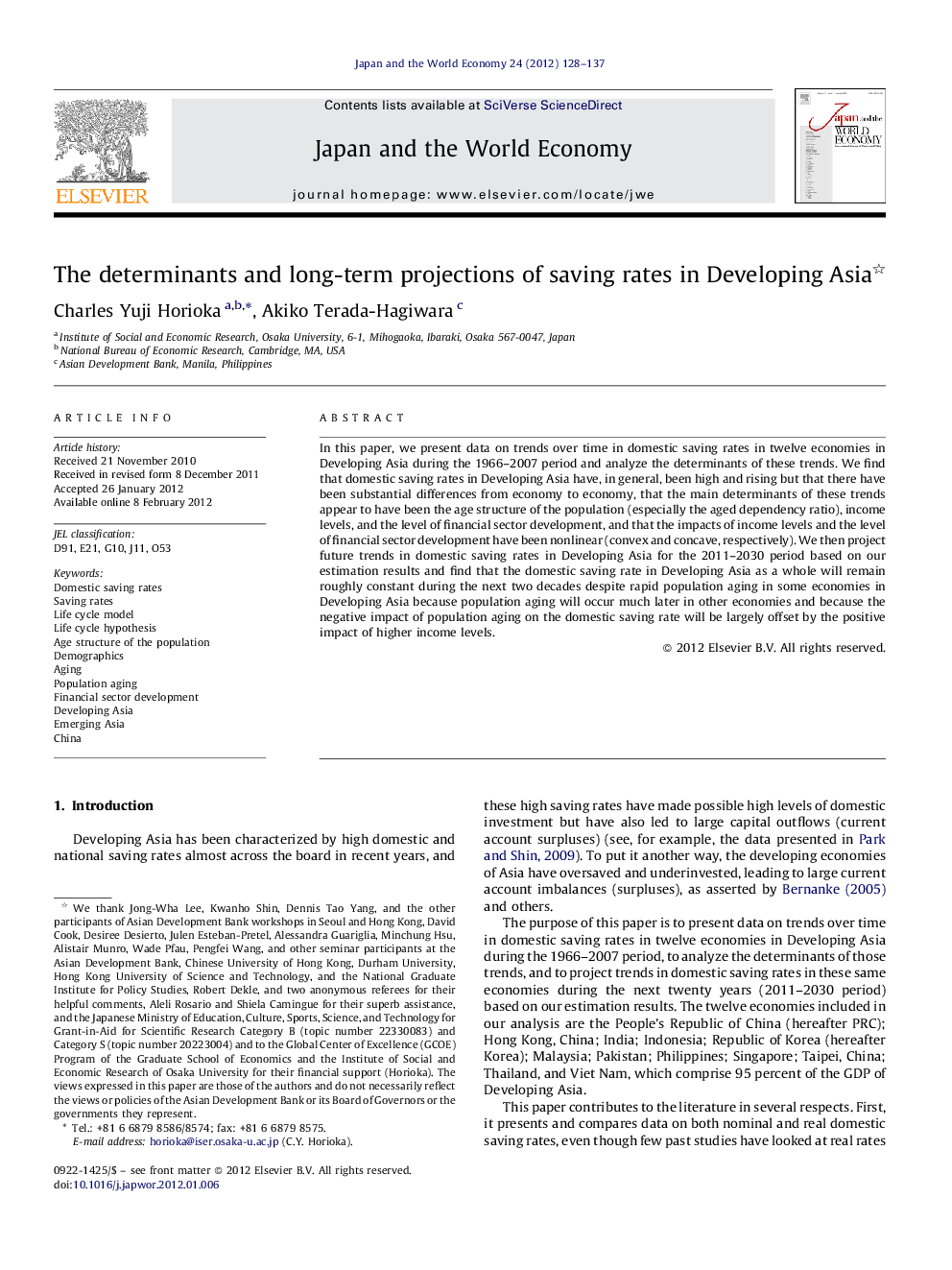| Article ID | Journal | Published Year | Pages | File Type |
|---|---|---|---|---|
| 5086332 | Japan and the World Economy | 2012 | 10 Pages |
In this paper, we present data on trends over time in domestic saving rates in twelve economies in Developing Asia during the 1966-2007 period and analyze the determinants of these trends. We find that domestic saving rates in Developing Asia have, in general, been high and rising but that there have been substantial differences from economy to economy, that the main determinants of these trends appear to have been the age structure of the population (especially the aged dependency ratio), income levels, and the level of financial sector development, and that the impacts of income levels and the level of financial sector development have been nonlinear (convex and concave, respectively). We then project future trends in domestic saving rates in Developing Asia for the 2011-2030 period based on our estimation results and find that the domestic saving rate in Developing Asia as a whole will remain roughly constant during the next two decades despite rapid population aging in some economies in Developing Asia because population aging will occur much later in other economies and because the negative impact of population aging on the domestic saving rate will be largely offset by the positive impact of higher income levels.
⺠We present data on trends over time in domestic saving rates in twelve economies in Developing Asia during 1966-2007. ⺠We analyze the determinants of these trends using econometric analysis and panel cross-country data for 1996-2007. ⺠We find that the main determinants of these trends were the age structure of the population and income levels. ⺠We project future trends in domestic saving rates in Developing Asia for the 2011-2030 period. ⺠We find that the domestic saving rate in Developing Asia will remain roughly constant during the next two decades.
